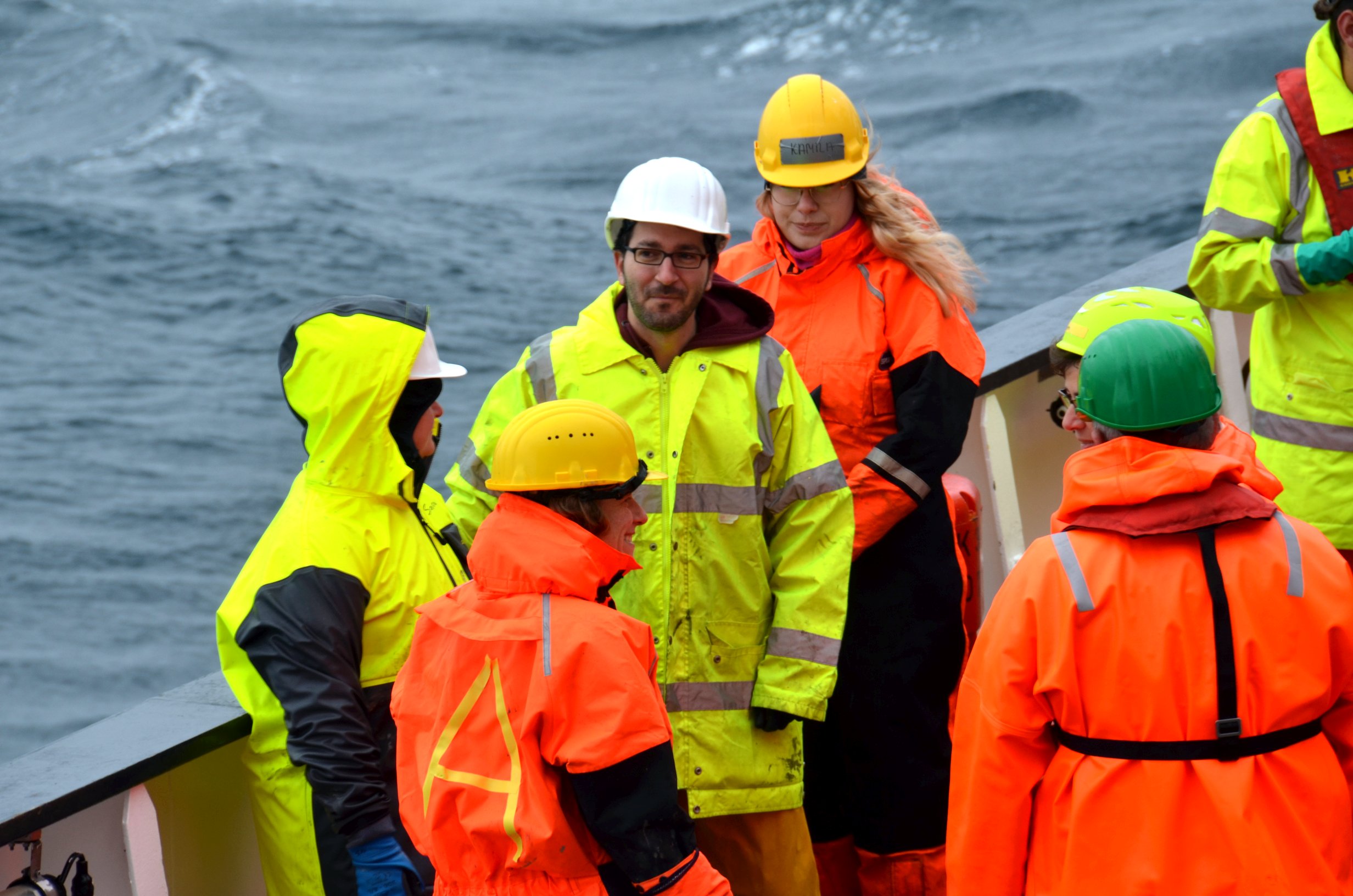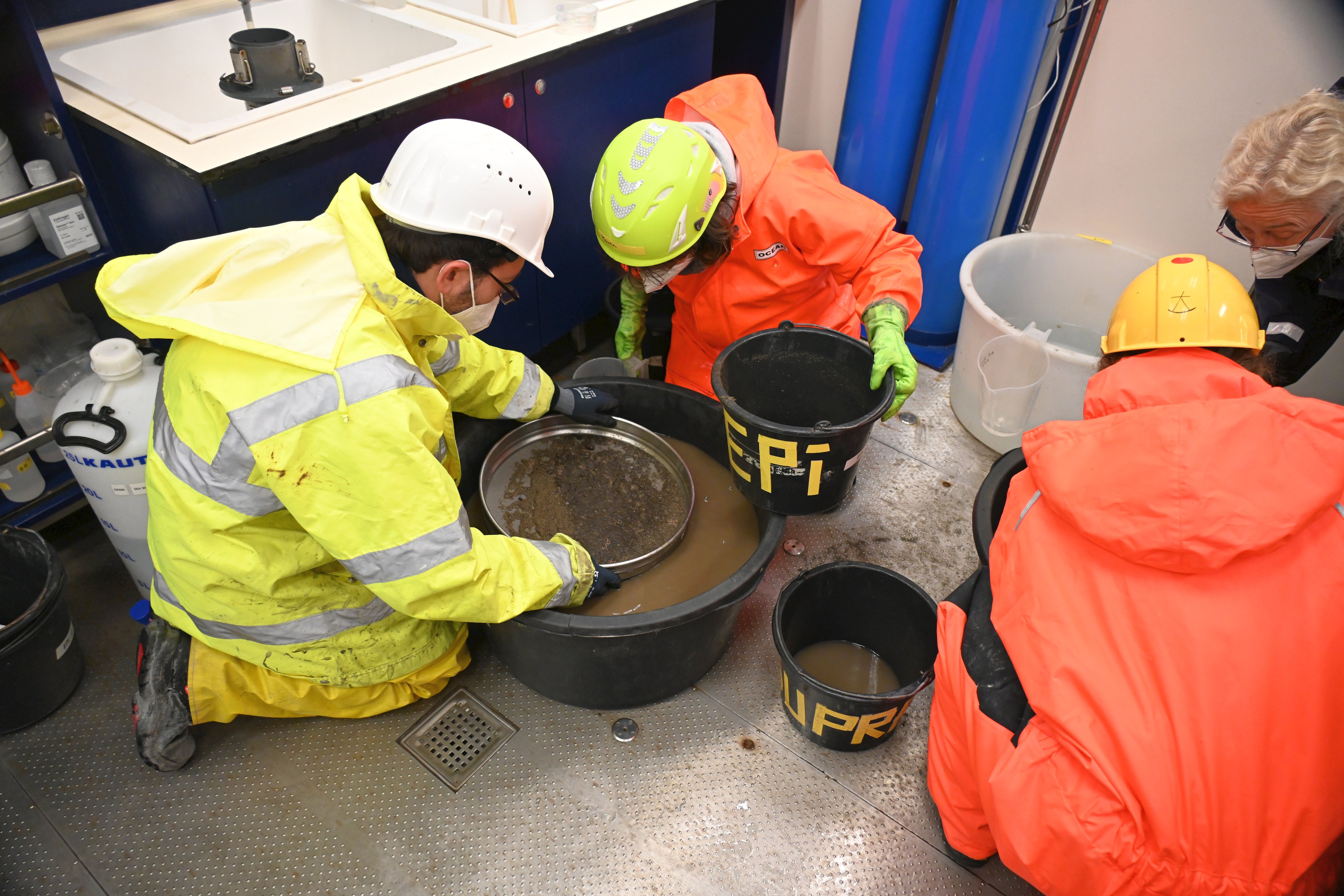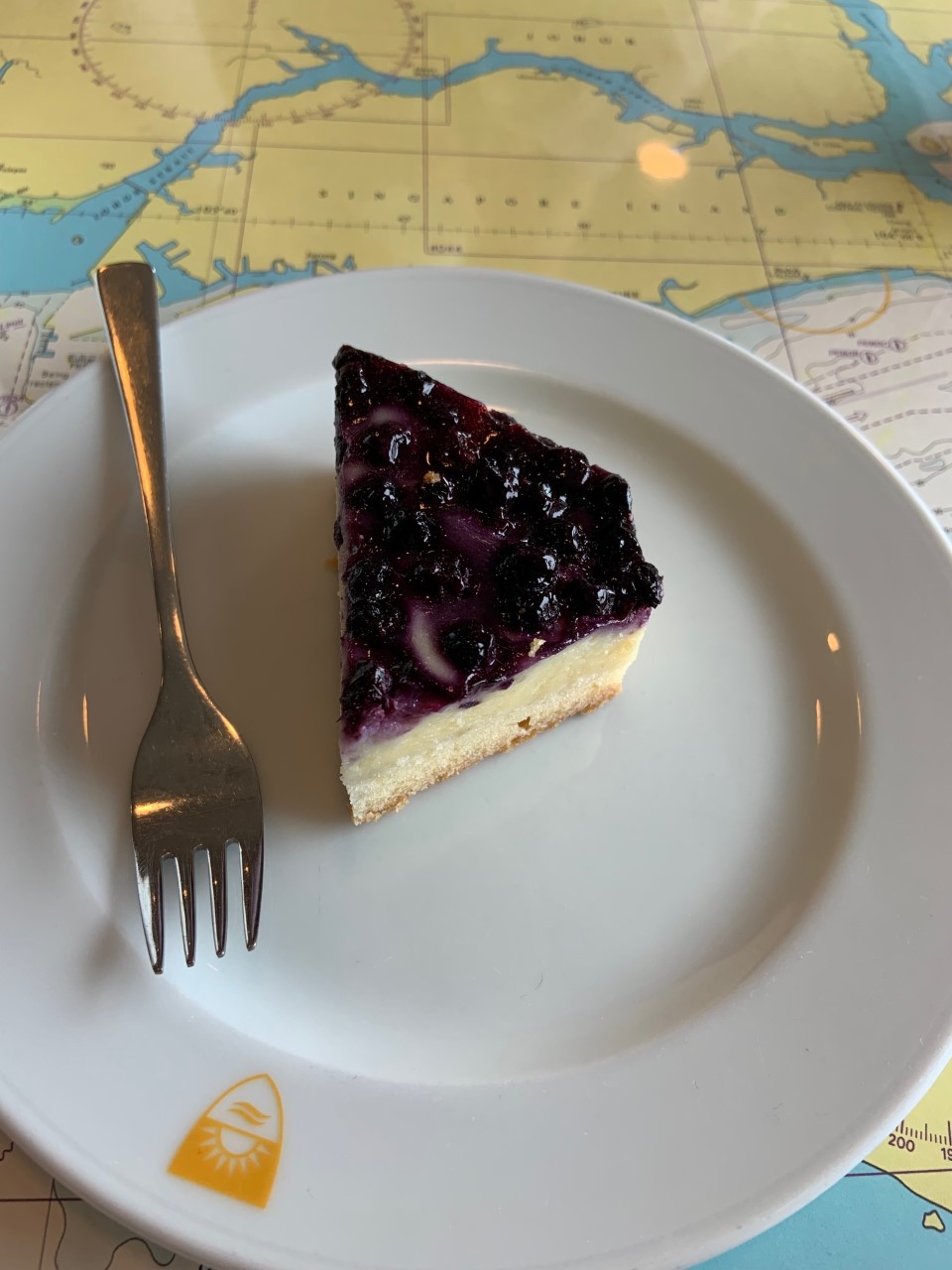Discovering deep-sea peracarid crustaceans in the Aleutian Trench and Bering Sea!
Hi everybody, I am Davide Di Franco, Italian postdoctoral fellow from the Senckenberg Research Institute and Museum in Frankfurt, Germany. AleutBio is the second expedition I have had the pleasure to join. I had my first one in the Southern Ocean during my PhD studies. Although the landscape and research questions were quite different, both expeditions have a common point: they both are life experiences that leave beautiful memories and great opportunities to learn something new, and they are the beginning of a personal and professional growth.
My research interest focuses on a very diverse group of malacostracan crustaceans that belong to the superorder Peracarida. This comprises five major orders: Amphipoda, Cumacea, Isopoda, Mysidacea and Tanaidacea. There are also other less frequent orders but I will not talk about them as this goes beyond the purpose of this blog and yes, it would get too boring for the readers. Who likes those few other unknown orders after all?
So now you might wonder, what do I like about those main five orders then? Well, first of all, they look cool. Just have a look at the images attached in this blog, aren’t they beautiful? Although, the scientific reason why I find them extremely interesting is their dominance and key role in benthic ecosystems. They usually show an incredibly high diversity of species and abundance of individuals, they were able to dominate not only the sediments with infaunal taxa (e.g. cumaceans and tanaidaceans) but also the seafloor (benthos) and the water column (pelagos, mysidaceans, swimming isopods and amphipods). One of the most interesting characters of this large group of animals is that they are brooders and develop their juveniles in a ventral marsupium (can you imagine that poor mama isopod carrying around 20-30 children? It must be tough). Their brooding lifestyle does not allow them to have a high dispersal capability, and this is one of the reasons that drives their species diversity. They were able to evolve an extremely diverse variety of life-styles, they include detritivorous species, predators, scavengers, filter-feeders, suspension-feeders, even parasites. Thanks to their dominance and variety of life styles they play a key role in the benthic ecosystems, processing the organic matter that reaches the seafloor and being food themselves for many marine species.
During the current AleutBio expedition, I am working with the epibenthic sledge (EBS) team. In particular, some of the tasks include sorting the samples on board, identifying the different taxa and database management (thank you Karen for teaching me a lot about it!). I am here with my PhD student Andreas, I am very glad to see that he is doing a great job. Together we will study the composition and distribution of peracarid assemblages from the Aleutian trench and Bering Sea with a special focus on the order Isopoda. We will study the species diversity and biogeography of isopod species. Besides this, our aim is to compare data from the Aleutian Trench with those from the earlier KuramBio expeditions in the Kuril-Kamchatka Trench, to assess differences in species composition and assemblage structure of peracarid and isopod crustaceans.
Oh, it is 15:00, and this is cake time, my favorite time of the day! So I will leave now and go to take one piece (maybe three)!
Jokes aside, the time here on the ship has been great, we all get along pretty well. The time on the ship is almost over, and I will go back home with very nice memories, more knowledge, and overall one more unforgettable experience!
Davide Di Franco




